Essence of the Elbe: Hamburg, then Berlin to Prague
June 26 – July 11, 2013
Jim & I and our friend Linda went on this delightful trip with Grand Circle Cruise Line. This was our 31st trip with GCT/OAT. We began our adventure with a four day pre-trip in Hamburg, Germany. Next was two days in Berlin, Germany. Then we boarded the M/S River Allegro and cruised on the Elbe River for seven days from Magdeburg, Germany to Dresden, Germany. Due to the recent flooding our ship was one of the first back on the river. Our last two days were spent in Prague, Czech Republic. Our awesome program director was Kati. (The map is copied from the Grand Circle web site.)
Save Money: If you decide you’d like to go on this or any Grand Circle Travel or Overseas Adventure Travel trip, and you are a first time traveler with them, they will give you $100 off any trip if you mention the name of my travel blog and my customer #000561413. New travelers instantly receive $100 off the cost of the trip, and I will receive $100 when you depart on your trip.
Hamburg, Germany: Hamburg is the second largest city in Germany with a population of 1.8 million. Situated on the river Elbe, the port of Hamburg is the second largest port in Europe (after the Port of Rotterdam) and tenth largest worldwide. It is considered one of the most affluent cities in Europe, and it has become a media and industrial center.
—————————————-
Below is our hotel, “The Radisson Blue” and the adjoining botanical gardens. Looking out our 23rd story window is an overlook of Hamburg. Our hotel was next to a metro/train station so we purchased a three day transportation ticket and could zip most anyplace on the metro and trains.
Hamburg lacks a quaint medieval center. Bombing destroyed about a third of the city in WWII, but a huge fire in 1842 had already leveled Hamberg’s atmospheric old town. The impressive, 647 room Rathaus (City Hall) was completed in 1897. The Rathaus overlooks the Rathausmarkt, the plaza used for local festivals.
Dinner at the BlockBrau Beer Garden overlooking the Hamburg Harbor. Highly recommend the Elderberry Beer alongside a delicious German dinner.
Well, since our hotel was next to a station it seemed only sensible to take advantage of the situation and check out the first of two places I had read about that I thought we’d enjoy seeing. Lubeck and Luneberg. So Lubeck was first on the agenda. After doing a city tour in the morning with GCT, Jim, Linda and I headed out for Lubeck. It was less than an hour northeast by train.
—————————————-
Lubeck, Germany: Lubeck, the former capital and Queen City of the Hanseatic League, was founded in the 12th century and prospered until the 16th century as the major trading center for northern Europe. The old part of Lubeck, known as the City of Seven Spires, is on an island enclosed by the Trave River and is barely a mile long. Because of its Brick Gothic architectural heritage, is listed by UNESCO as a World Heritage Site.
Walking from the train station takes you into the old town through the 15th-century Holsten Gate (1478), which sits across the Trave and once guarded Lubeck’s western entryway. The Lubecker Rathaus (Town Hall) was a pretty square for a stroll. We got to see lots of crow-stepped gabled town houses and we were never far away from water. It was a nice afternoon outing.
Luneburg, Germany: Luneburg is about a 45 minute train ride southeast of Hamburg. Luneburg dates back more than 1,000 years and is considered one of the prettiest towns in northern Germany. Having survived the Second World War unscathed, it has retained its charming medieval character. ‘White gold’ was extracted at the salt works for over 1,000 years and it was the trade of this precious commodity that put the town on the map. (The ancient lift in the 2nd photo loaded & unloaded salt into boats.) Luneburg quickly became one of the wealthiest and most important towns in the Hanseatic League.
There’s always time to eat, correct?
It was fun waiting on the train platform in Luneberg. The young people were heading to Hamburg to walk in a parade.
Hamburg Hauptbahnhof: Main train station in Hamburg.
The last evening of our pre-trip to Hamburg was spent with the group at the Schiffer Borse in a cute ship theme restaurant near the train station in Hamburg.
Schwerin, Germany: We bid Hamburg farewell and went by coach towards Berlin. We stopped for lunch at Schwerin, which is best known for the Schwerin Castle, located on an island in the lake of the same name. The 973 room castle was completed in 1857. For centuries it was the home of dukes and grand dukes.
The town center of Schwerin, with a very interesting statue. It shows people “mooning” Henry the Lion, who was Duke in the mid-12th century.
Berlin, Germany: The largest city in Germany Is the capital city and has a population of 3.3 million people. Since first being documented in the 13th century, Berlin has been the capital of the Kingdom of Prussia, the German Empire, the Weimar Republic, and the Third Reich. After WWII the city became divided between East Berlin and West Berlin. Following German reunification in 1990, the city regained its status as the capital of Germany.
——————————-
When people think of Berlin, the first thing that usually comes to mind is its most famous landmark – the Brandenburg Gate. It was commissioned and built from 1788-91. During the post-war Partition of Germany, the gate was isolated and inaccessible immediately next to the Berlin Wall. The area around the gate featured most prominently in the media coverage of the opening of the wall in 1989. Our U.S. Embassy is located to the left and in the block directly beside the Brandenburg Gate.
——————————–
The Memorial to the Murdered Jews of Europe: It consists of a 4.7-acre site covered with 2,711 concrete slabs or “stelae”, arranged in a grid pattern on a sloping field. The slabs undulate in a wave-like pattern. Each is a five-sided monolith, individually unique in shape and size. According to Eisenman’s project text, the stelae are designed to produce an uneasy, confusing atmosphere, and the whole sculpture aims to represent a supposedly ordered system that has lost touch with human reason.
———————————————
The Berlin Wall: The Berlin Wall was the physical division between West Berlin and East Germany from 1961 to 1989 and the symbolic boundary between democracy and Communism during the Cold War. The Berlin Wall stretched over a hundred miles. It ran through the center of Berlin, and also wrapped around West Berlin, entirely cutting West Berlin off from the rest of East Germany. The Wall was constructed by the Communist to prevent the East Germans from fleeing to the West for a better life. The wall literally came up overnight. Crews began tearing up streets that entered into West Berlin, dug holes to put up concrete posts, and strung barbed wire all across the border between East and West Berlin. Telephone wires between East and West Berlin were also cut. Whichever side of the border one went to sleep on during the night of August 12, they were stuck on that side for decades.
———————————
Below, the copied picture of the map shows the outline of the Wall in 1949. This new organization of Germany became official when the three zones occupied by the United States, Great Britain, and France combined to form West Germany (the Federal Republic of Germany). The zone occupied by the Soviet Union quickly followed by forming East Germany (the German Democratic Republic). Today, (as indicated in the 2nd photo), the former location of the Berlin Wall is shown throughout the city center with a double row of cobblestones on public streets and sidewalks.
Checkpoint Charlie: The name given by the Western Allies to the best-known Berlin Wall crossing point between East Berlin and West Berlin during the Cold War.
———————————————–
These are some of the remaining parts of the Berlin Wall. The last photo shows the barrier which included guard towers placed along large concrete walls, which circumscribed a wide area known as the “death strip”.
Potsdam, Germany: On 16 July 1945, the “Big Three” leaders met at Cecilienjof Palace in Potsdam, Germany, near Berlin. In this, (the last of the World War II heads of state conferences), President Truman, Soviet Premier Stalin and British Prime Ministers Churchill and Atlee discussed post-war arrangements in Europe, frequently without agreement. Future moves in the war against Japan were also covered. The meeting concluded early in the morning of 2 August. It ended with an ultimatum: Japan must immediately agree to unconditionally surrender, or face “prompt and utter destruction”.
Wannsee Conference: On January 20th, 1942, fifteen high-ranking civil servants and SS-officers met in this villa in the Berlin suburb of Wannsee to discuss plans of “The Final Solution” of the Jewish question in Europe. The decision was to deport the Jews of Europe to the East and murder them. Under the direction of SS General Reinhard Heidrich the “Final Solution” was the code name for the systematic, deliberate, physical annihilation of the European Jews. (The villa is now a memorial and education site.)
All Aboard….the M/S/ River Allegro! This ship belonging to the Grand Circle Cruise Line ship was ranked #2 in Condé Nast Traveler’s “Top 40 River Cruise Ships in the World” 2013 Readers’ Poll.
We boarded the M/S River Allegro on July 2, and as I mentioned before Germany was recovering from the worst flood since 2002. In fact one of the news reports on June 11 reads: “Flood misery as surging Elbe breaches defenses in Germany. Over the past 10 days, floods on the Elbe and other rivers including the Danube have also affected southern Germany, the Czech Republic, Slovakia and Hungary.” With that being said let me tell you….one would have never known there had been flood devastation only 3 weeks previous. The Germans jump in there and make things neat and tidy. Germany is a proud, spotlessly clean and neat country, flood or no flood!
Our first evening aboard the Allegro, Jim & I enjoyed dinner with our splendid “singing” Captain. As usual, our favorite location on the ship was on the open top deck where we could watch the world go by as we cruised leisurely down the River Elbe.
We should have boarded the ship in Tangermunde, but due to the docks not yet being repaired in that town we boarded the ship a little further south down the river in Magdeburg. The next day we went back by coach to visit the lovely town of Tangermunde.
Tangermunde, Germany: Dating back to 1009, this town is located along the Elbe River. We strolled all through the little town viewing the ancient city walls, the stork nests, and the Gothic town hall. It was fun seeing the old East German car (the Trabant) sticking out of the building, especially after hearing the stories from our program directors involving the Travant during their time in the GDR, as they lived behind the wall in East Germany. There were also lots of beautiful half-timbered houses admire. We looked at the remains of a fortified castle built in the 14th century by Charles IV. It was his second royal residence, after Prague. We also had a nice lunch in a cute, medieval looking restaurant.
Cruising between Magdeburg and Wittenberg.
Wittenberg, Germany: The 12th century city of Wittenberg, is officially known as Lutherstadt Wittenberg, the cradle of the Protestant Reformation. Martin Luther (1483-1546) lived, preached and began his philosophical dispute with the Catholic Church here. The Reformation started in Wittenberg in 1517, when he may have nailed his famous 95 page Thesis to the wooden doors of the Castle Church.
———————————————
Lutherhaus (Luther House): A former Augustinian monastery in Wittenberg. This building hosted several important events in Luther’s life, not the least of which is his conversion from fearful monk to confident preacher of “justification by faith alone.”
———————————–
Market Square of Wittenberg:
Elster Kindergarten: A small town along the Elbe completely lost it’s Kindergarten building due to the recent flood. Grand Circle Foundation gave a donation of $10,000 to the school. Since Jim & I and another couple had been on the most trips with Grand Circle, we had the honor of presenting the $10,000 check to the mayor of the town. After the presentation our guests enjoyed a bowl of ice cream.
Cruising from Elster to Torgau.
Torgau, Germany: The town is best known as the place which commemorates the meeting of US and Soviet forces during the Second World War. The meeting of soldiers signified an important action towards the end of WWII, with the allied powers avowing to complete the dissolution of the Third Reich. We went to the the monument, and a man that was a very young soldier at that time spoke to us about the war. Kati was the excellent interpreter.
———————————————
Hartenfels Palace of Torgau was built in the 15th and 16th centuries in the style of the early German Renaissance.
———————————————–
It’s hard not to be impressed by the Marketplace in Torgau with its Renaissance town hall and ensemble of Renaissance town houses.
Cruising from Torgau to Meissen. The first picture shows the repairs of a broken dyke from the recent flood. Saw lots of camping groups along the river.
How about a friendly “beer tasting” on the boat? A great assortment of German beer. Kati & Christian made it lot of fun!
Meissen, Germany: Famous for the manufacture of porcelain, based on extensive local deposits of china clay and potter’s clay. Meissen porcelain was the first high quality porcelain to be produced outside of the Orient. The first European porcelain was manufactured in Meissen in 1710. We toured the factory then went upstairs to the museum. Lastly we journeyed around the sales floor.
Thought the huge bowl with cherubs, and the indicate fountain were beautiful. The three lady figure dates back to 1784. The bowl was listed for sale for 32,500 Euro. I didn’t buy it!
————————————–
Meissen, Germany: The ship docked by the Albrechsburg Castle. The construction of it began in 1471. It was constructed solely as a residence, not as a military fortress, the first German castle built for such a purpose. Jim & I are ready to set out on our stroll around the town, and on up to the castle for a tour. Meissen was founded as a German town by King Henry I in 929. With a population of only 30,000 it’s the size of town I like the best. We thoroughly enjoyed the entire afternoon.
———————————————
Had to post this photo of a picture that I took of the flood. I understand the water was 29 feet above flood stage. The beige building in the flood picture is the same building as in the picture we took 3 weeks later. This photo shows that same beige building next to the street before the castle. The flooding went way up into town. Again I say the only way one would have known was to look inside a building and see the entire bottom floor stripped out waiting for repairs. Again…in a very neat and tidy fashion. The German way.
——————————————-
On our way up to Albrechtsberg Castle. Yes, that is the Mr. in a suit of armour I guess. And yes, many steps to the top. The 13th century Gothic Meissen Cathedral is next, followed by a photo of the Castle. No pictures were allowed inside the Castle. However, outside we did take a picture overlooking the Elbe and our river cruise ship.
——————————————
On our walk up to the Castle and back down they were having a bicycle competition of seeing who could ride down from the castle the fastest without killing themselves. We only saw one ambulance picking up a broken kid.
——————————
Our touring is over, time to sit down in the old town square of Meissen and enjoy my favorite drink of Germany, “the radler”…..beer and lemonade. And fare-the-well to the lovely town of Meissen and the Albrechtsberg Castle!
Dresden, Germany: A flourishing artistic center until the rise of the Nazis, it was almost completely destroyed during WWII. Dresden has been rebuilt from the ground up. This is a copy of a post card that I purchased that shows Dresden, 1945; followed by a view from our riverboat, 2013.
————————————————-
The Furstenzug: This large mural is located on the outer wall of the Dresden Castle. It shows the mounted procession of the rulers of Saxony, originally painted between 1871 and 1876 for Saxon’s ruling family. In order to make the work weatherproof, it was replaced with approximately 23,000 Meissen porcelain tiles between 1904 and 1907. With a length of 335 feet, it is known as the largest porcelain artwork in the world. Only minimal damage to the tiles resulted from the 1945 bombing of Dresden.
——————————–
1st photo below is part of the Dresden Castle, and across the street is Katholische Hofkirche (Catholic Church of the Royal Court of Saxony). The 2nd photo is the Semperoper (Opera House).
—————————————
The Zwinger: A palace in Dresden, built in Rococo style. It served as the orangery, exhibition gallery and festival arena of the Dresden Court. The building was mostly destroyed in 1945, but has been rebuilt to its pre-war state. Today, the Zwinger is a museum complex.
——————————————–
Frauenkirche (Church of Our Lady): When completed in 1743, this was Germany’s tallest Protestant Church. In 1945 the firebombs came, and it burned for two days before finally collapsing. After the war, it was left a pile of rubble and turned into a peace monument. After reunification it was rebuilt, and reopened to the public in 2005. Other photos are in the immediate area of the Church.
—————————————-
Royal Palace Museum: Within the Royal Palace Museum is the Historic Green Vault. After the destruction of the WWII, the Green Vault has been completely reconstructed. Today, its treasures are shown in two exhibitions: The Historic Green Vault is famous for its splendors of the historic treasure chamber as it existed in 1733, while the New Green Vault focuses the attention on each individual object in neutral rooms. (No photos were allowed in the museum). After the museum is was certainly time for cool refreshments.
Saxon Switzerland National Park: The park is characterized by sandstone cliffs, deeply carved valleys, table mountains and gorges – a truly remarkable landscape. Saxon Switzerland National Park is located about 45 minutes from Dresden, Germany. Within the park there are some 250 miles of hiking paths and 31 miles of biking paths. It was a beautiful area.
Our last outing of “Cruisin’ Down the River.” Sure was fun on the M/S River Allegro!
Prague, Czech Republic: The “City of 100 Spires” is indeed a beautiful city. During the 1,000 years of its existence it has grown from a settlement to the capital and largest city in the Czech Republic. It spreads on both sides of the winding Vltava River, connected by 16 picturesque bridges. It is built over a series of hills and its varied architecture spans many centuries.
——————————
Prague Castle: What is the largest castle in the world? Prague Castle. Stroll through the Castle area and admire the overwhelming beauty of a place which has been the seat of Czech kings, emperors and presidents for a thousand years.
The city of Prague and whole castle grounds are dominated by the monumental St. Vitus Cathedral. The gothic Cathedral of St. Vitus was founded in the year 1344, with construction finally being completed in 1929.
——————————————-
The Charles Bridge: The famous historic bridge that crosses the Vltava river in Prague. Its construction started in 1357 for King Charles IV, and was finished in the beginning of the 15th century. Situated on the bridge are 30 statues erected between 1683 and 1714.
—————————————–
The Old Town Square of Prague: This was our third trip to Prague and I never get tired of seeing this beautiful square. The medieval Astronomical Clock was first installed in 1410, making it the third-oldest astronomical clock in the world and the oldest one still working. Church of Our Lady before Týn, is a dominant feature of the Old Town and has been the main church of this part of the city since the 14th century. The church’s towers are topped by four small spires.
The trdelnik: This pastry is a typical pastry of the Czech Republic and Slovakia. It is made by wrapping dough around a stick (wooden or metal) and roasting it over an open flame until it is golden brown and fully cooked.
So….what a fine way to end this wonderful trip through Germany and ending in the Czech Republic. Happy Travels!
“Life is not measured by the breaths we take,
but by the moments that take our breath away.”
~Anonymous



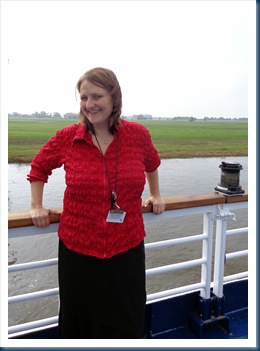

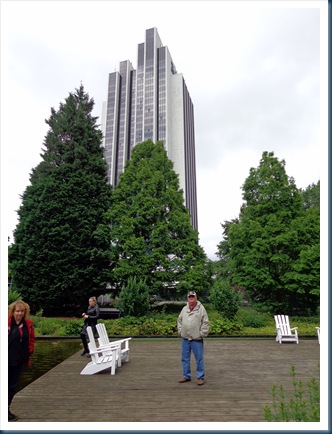
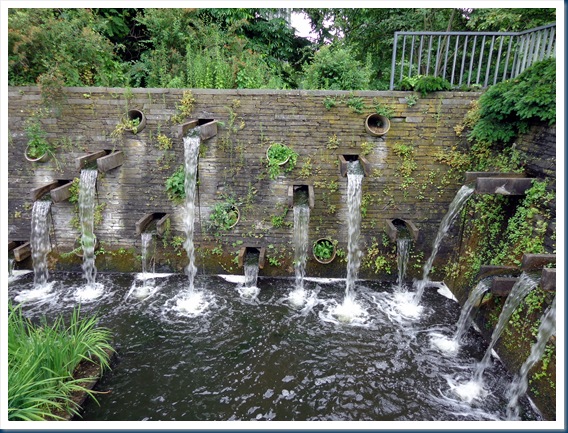
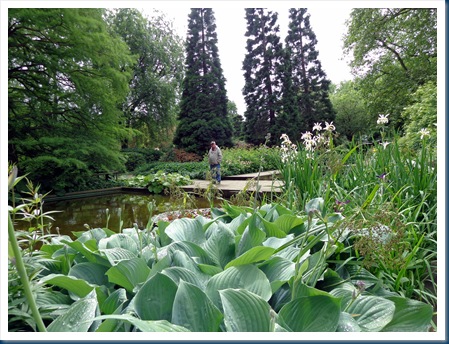
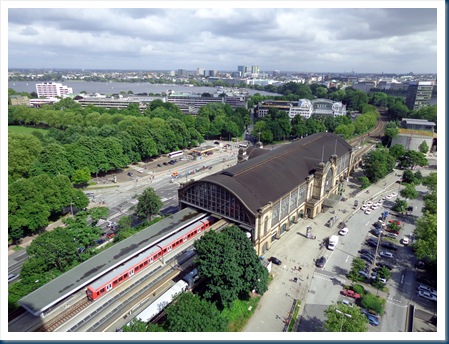


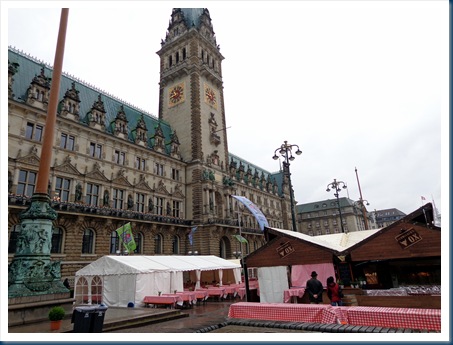



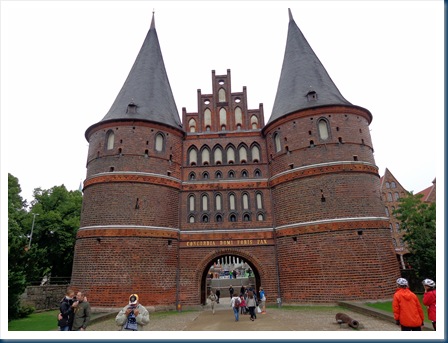


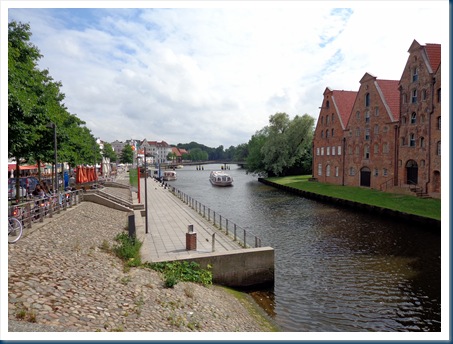
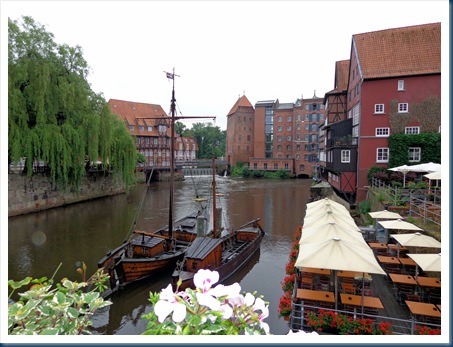
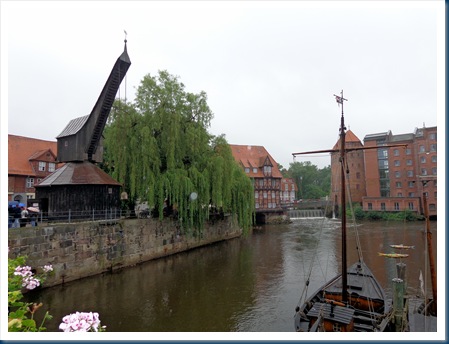

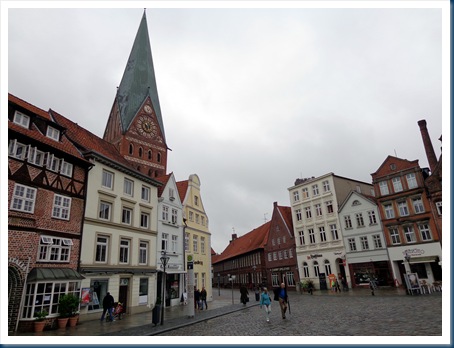


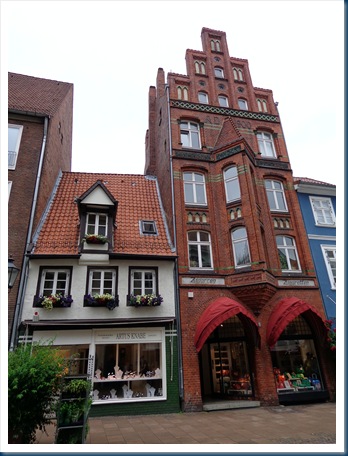

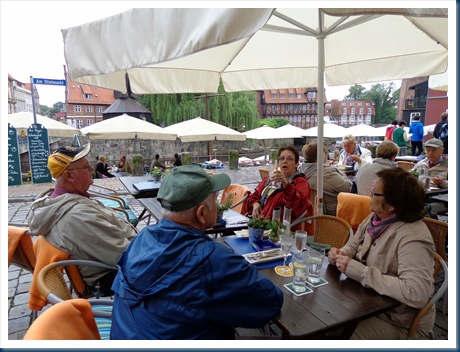
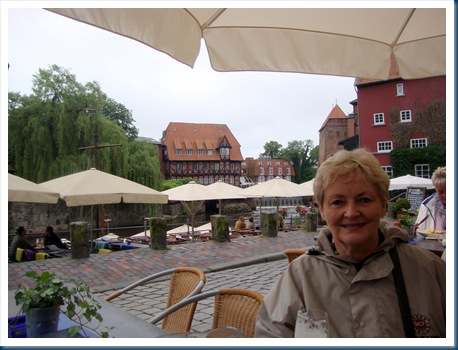


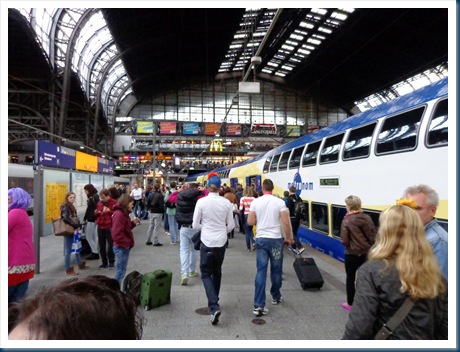

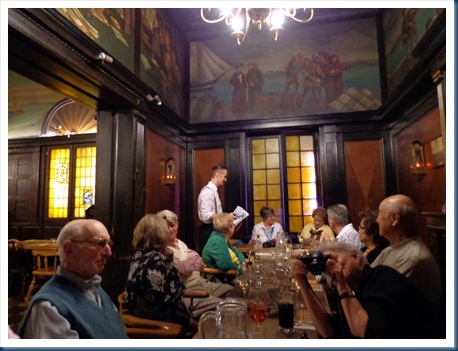












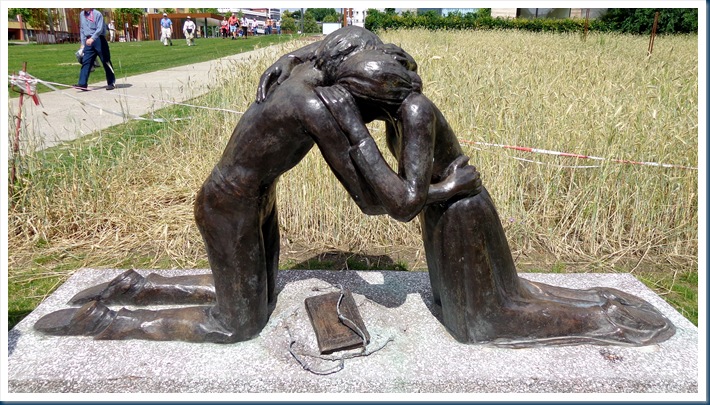
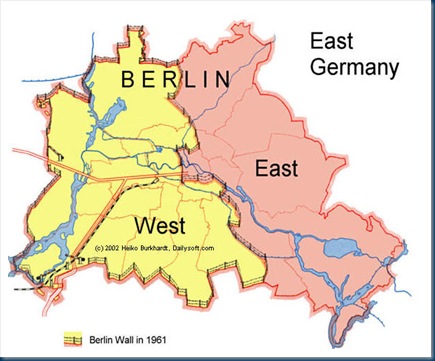

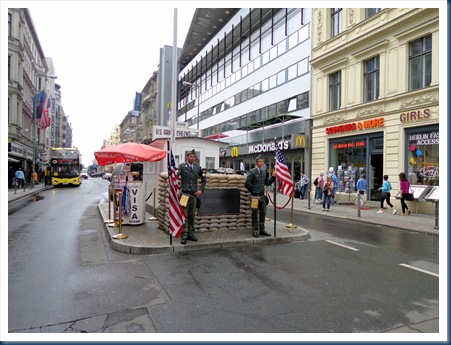



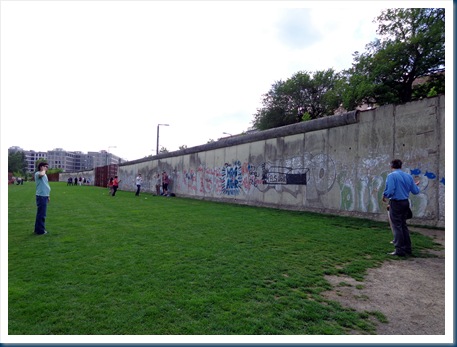








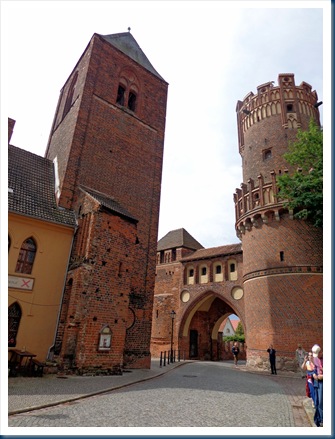



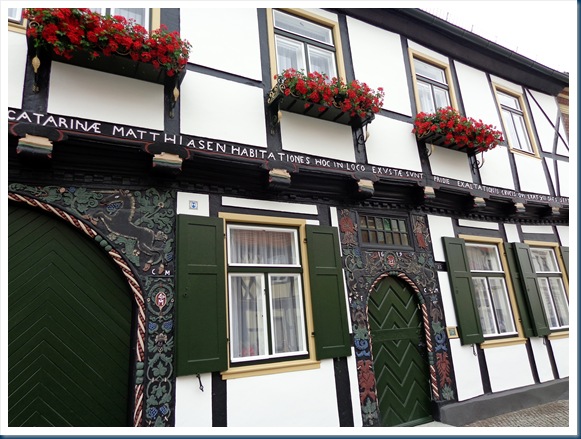

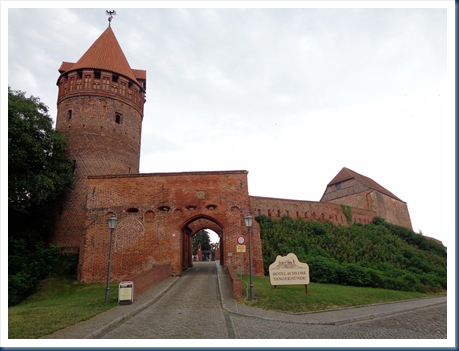
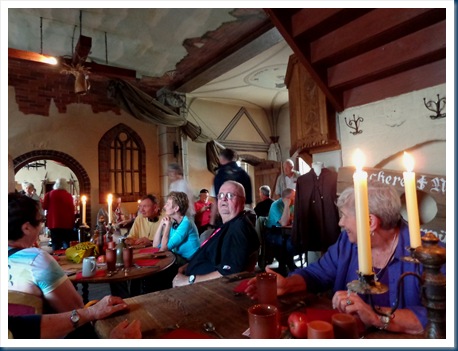








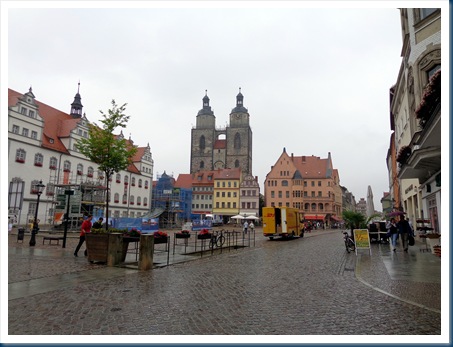






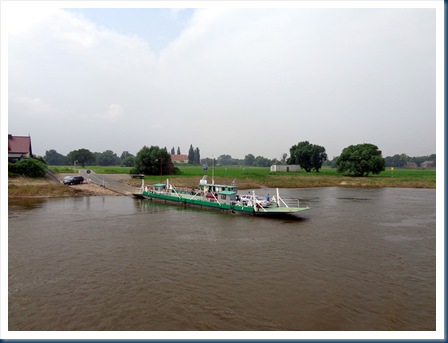
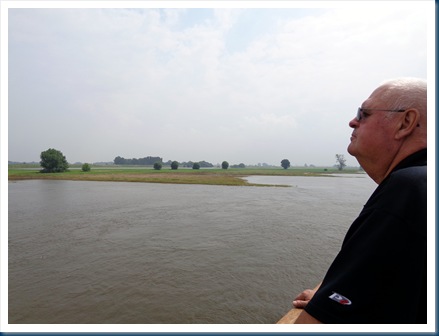
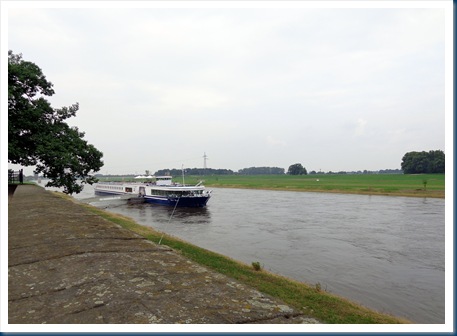
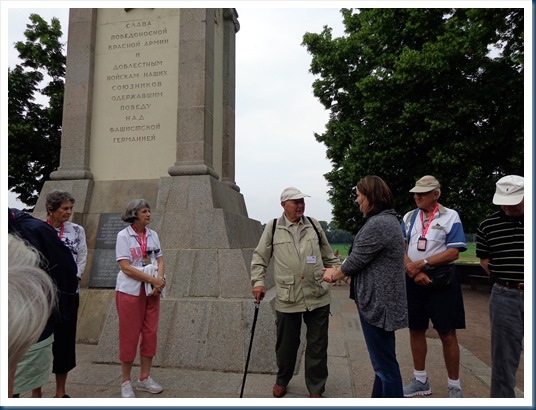
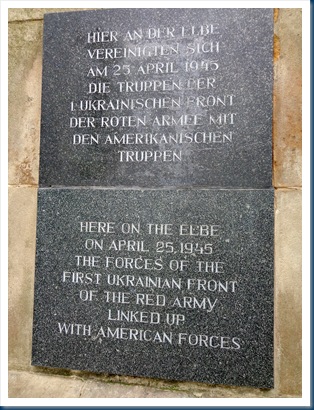

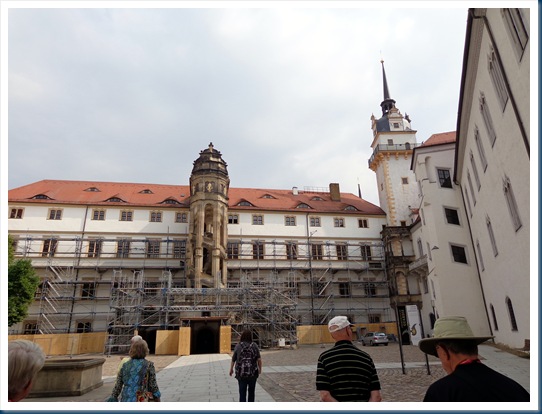



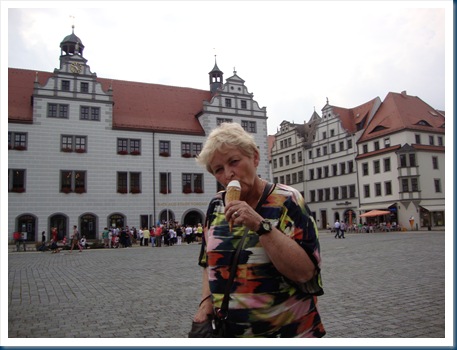

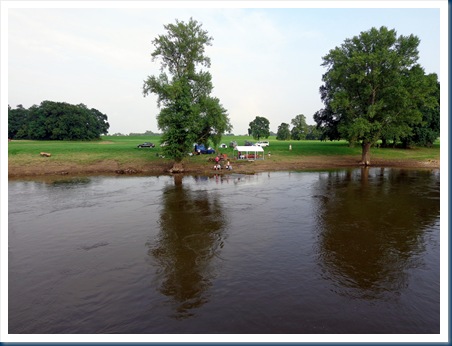
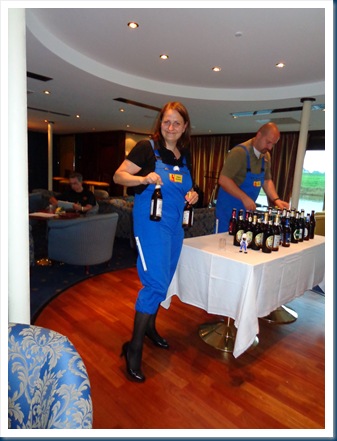


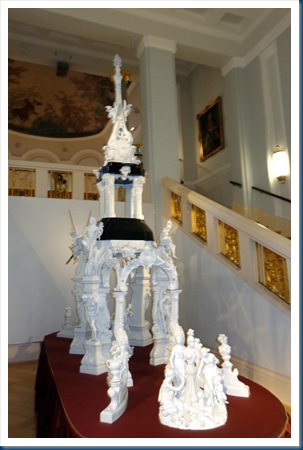

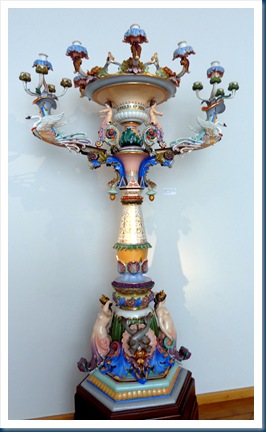

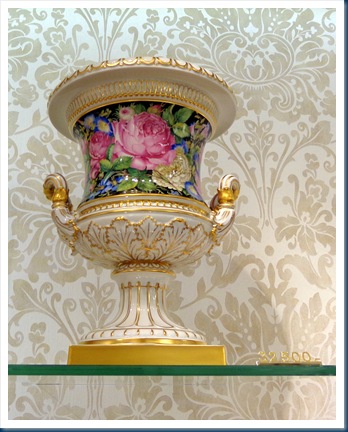


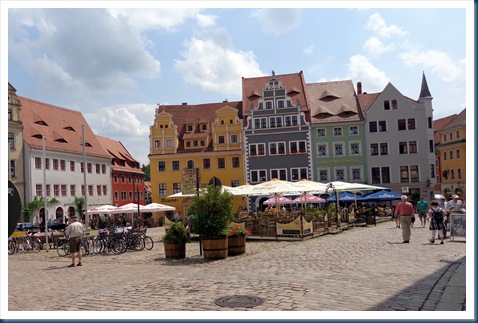
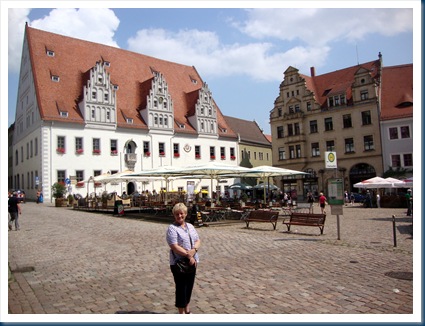






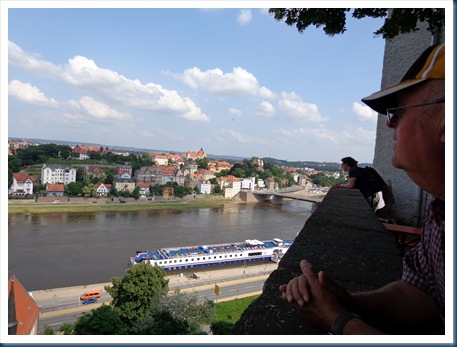





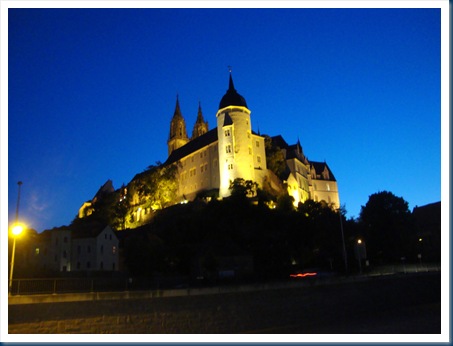



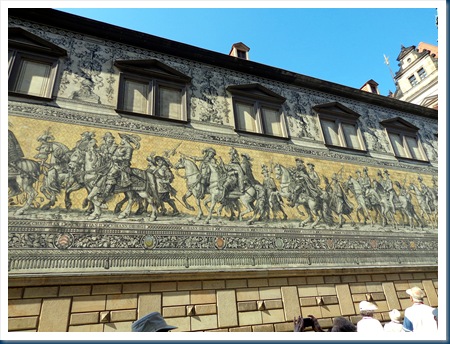



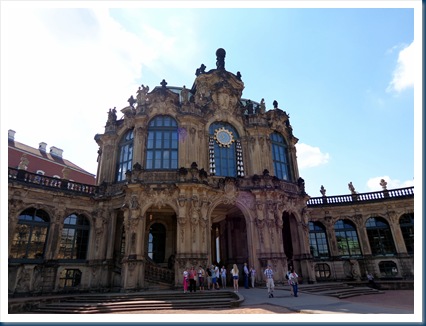

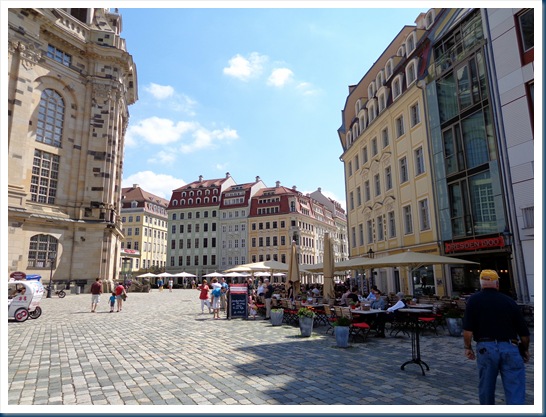

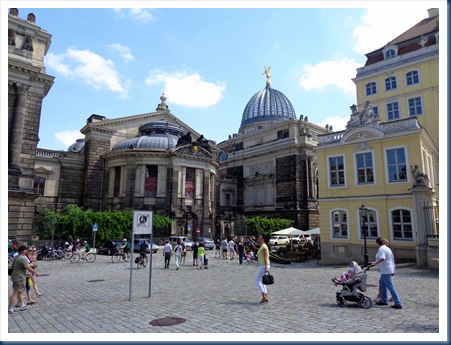
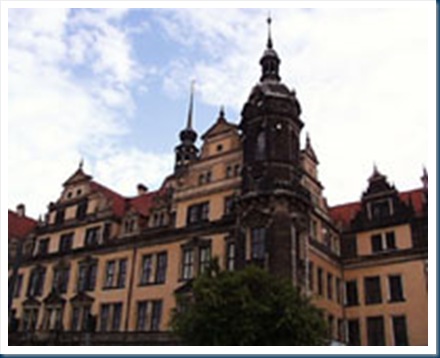
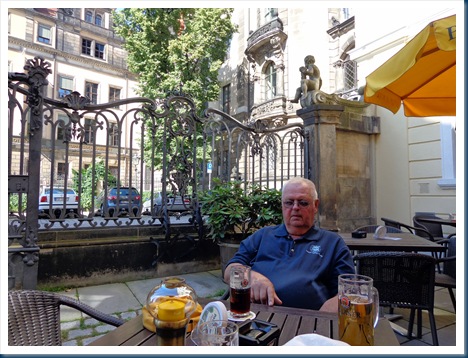

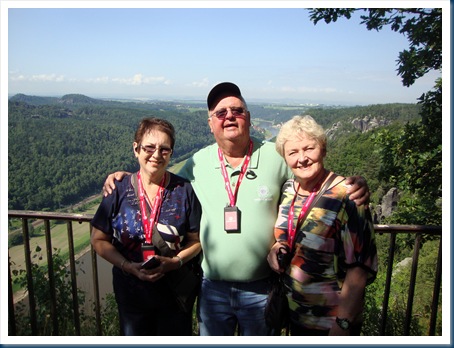


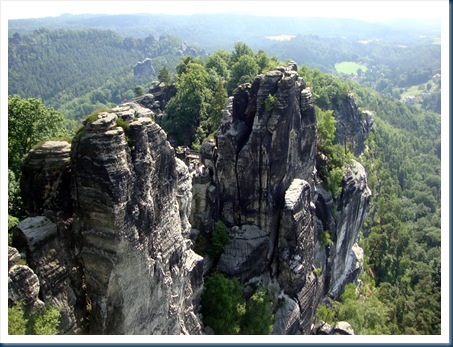

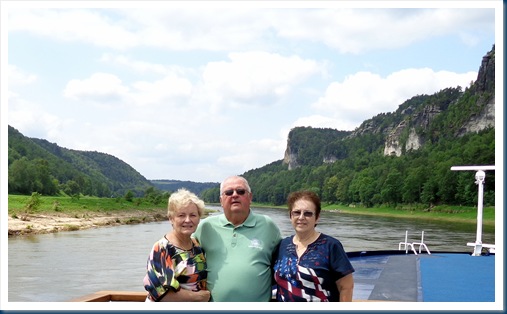
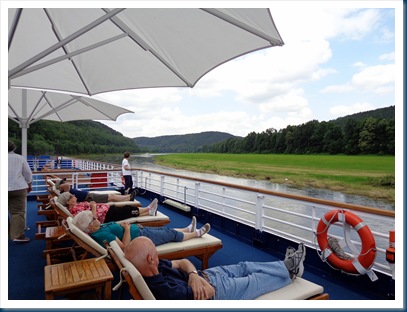

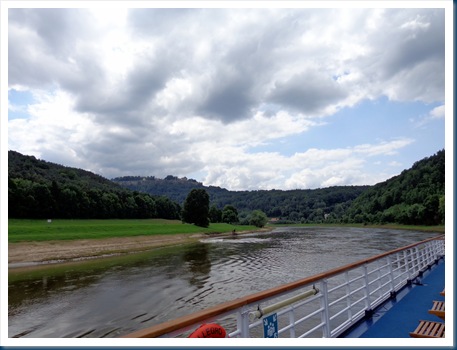
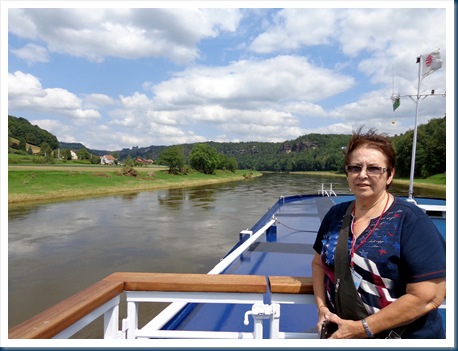
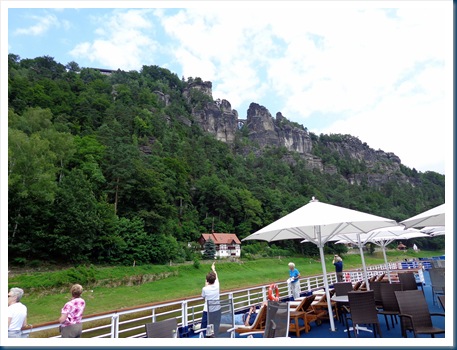







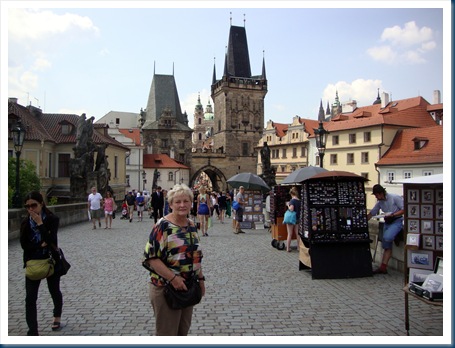


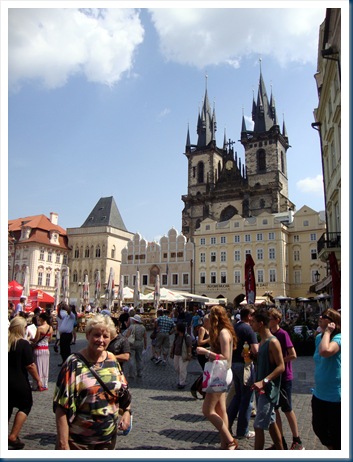

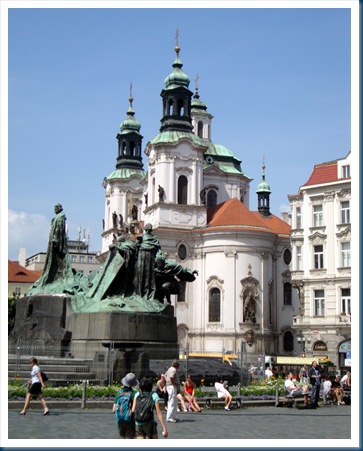


Thank you so much. We were on the GCT MS River Adagio, June 6 – 25, Buchasrest – Budapest plus Prague. Because of the rain, we were not able to make the last 3 days trip, couldn’t get under some of the bridges. It was a great trip and I would do it again without the flooding of course. Thank you for the great pictures and notes.
Glad you enjoyed my blog sheroverfield. It really is fun cruising on the river and seeing all the glorious things on shore isn’t it? And guess we will never be able to out guess the weather. Glad you enjoyed your trip even though you had flooding.
Loved it! Fun to re-live our journey, going in the other direction…looks like you had lovely weather! Glad you included the flood comparison photo!
Karla
Karla, thought you’d enjoy it since you just returned from the same trip. I wanted to include the flood pictures and mention how the Germans seem to always have a spotlessly clean home, yard and town even though they have just experienced havoc.
Thank you for sharing your vacation with us. What a BEAUTIFUL country! All the castles were my favorite buildings and the Saxon Switzerland National Park was breathtaking. The river cruising looked relaxing and very pleasant. Glad you two had a marvelous trip!
Thank you Cindy, I enjoy putting my blogs together. Germany is such a beautiful country. I was surprised at Saxon Switzerland since everything previous to that had been relatively flat. It was a nice experience to see the Swiss look and a great trip.
Thank you, fellow traveler, for sharing your blog. It really was a great trip and we are sooooo lucky we were able to cruise. We missed you on the Munich extension!
Carol Jeffords
You are welcome Carol. It was nice getting to know you, and it was indeed a great trip. Yes, we were fortunate that with the flooding it worked out so we were able to cruise. I bet you had a nice time in Munich. Happy travels to you.